A World Map: In Which We See…
“A World Map: In Which We See…” is Hunt’s second conceptual mapping, charting the production of “statelessness” within the contemporary globalizing world. Following the figures of the “prisoner” and the “refugee” through different constellations of relationships and situations, it locates how each is denied meaningful access to participation in democratic space and practice, protected only by rights that no one is typically willing or able to enforce. The map traces these figures through landscapes of economy and rights, as they are conceptualized by discourses including political philosophy, sociology, history, economics.
The project evolved out of an effort to understand the terms of the U.S. anti-prison movement alongside those of the anti-globalization movement, which Hunt had been engaging in at the time. While they were often struggling against the same political, economic and social forces, Hunt saw ways in which the movements were not speaking to one another, as they were evolving in different arenas and defining the “object” of their critique differently.
In each installation the map was redrawn uniquely for its context, while employing different methods for situating it into the conversation of that local space. This included interviewing people addressing criminalization and migration in each city, building the World Map’s Video Archive, which includes interviews by Rosie Braidoti, Rustom Barucha, Nils Christie, Leonardo Vilchis, and others. The second way of building dialogue around the World Map in each context was to build a workshop in which local activists, artists and others were invited to help with the drawing of the map, with different steps for engaging its ideas and asking how they relate to that local context. This included inviting the participants to become dossents for the work during the run of the exhibition who could offer viewers both their take on the map and the issues from the map that are locally relevant to them, offering them a platform for their own work. The most recent version of this workshop resulted in the creation of a collaborative response to the Map itself, which was then exhibited alongside the Map during the exhibition, “The Global Contemporary,” at ZKM in Karlsruhe, Germany.
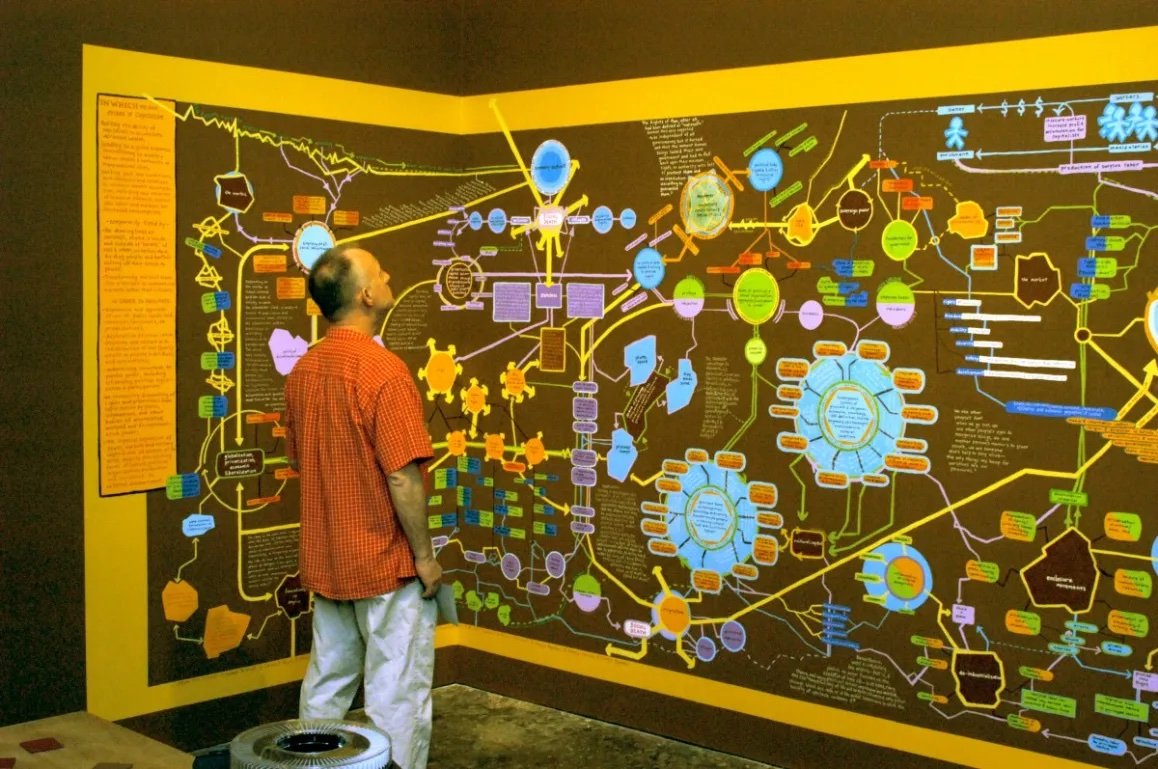
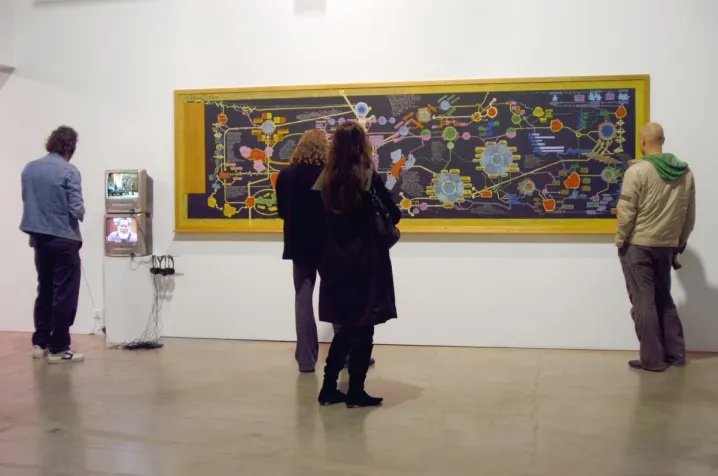
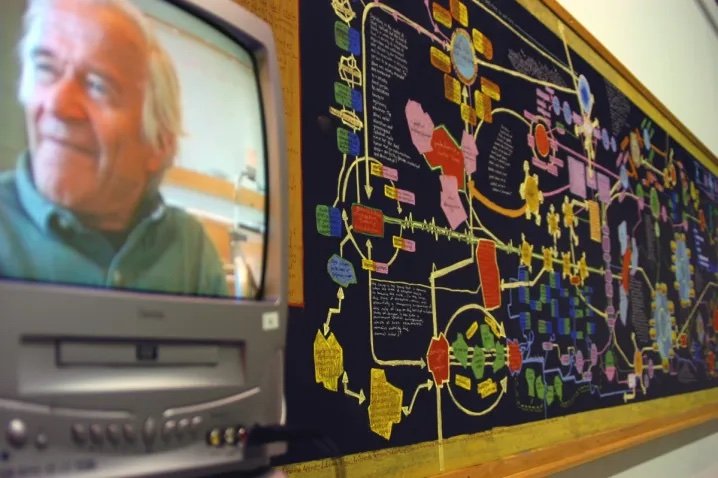

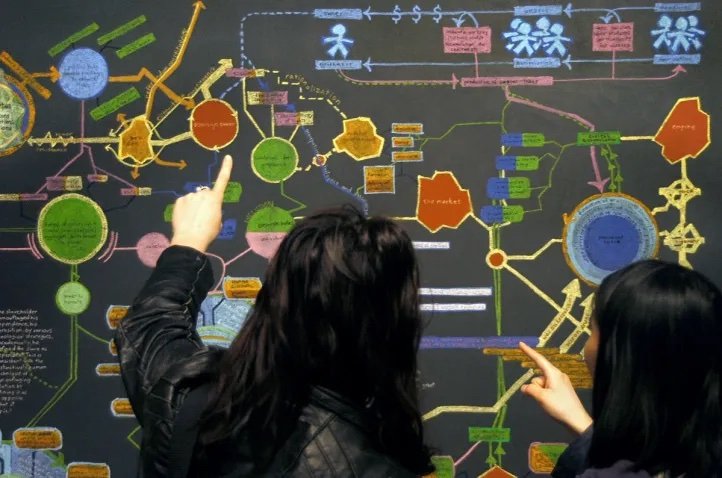
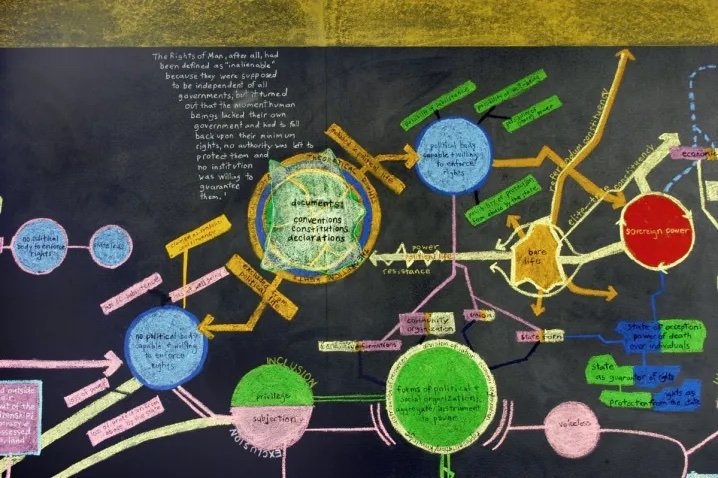
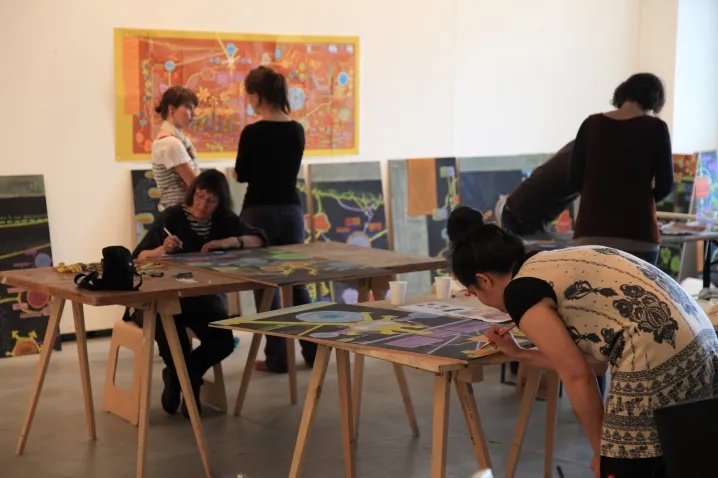
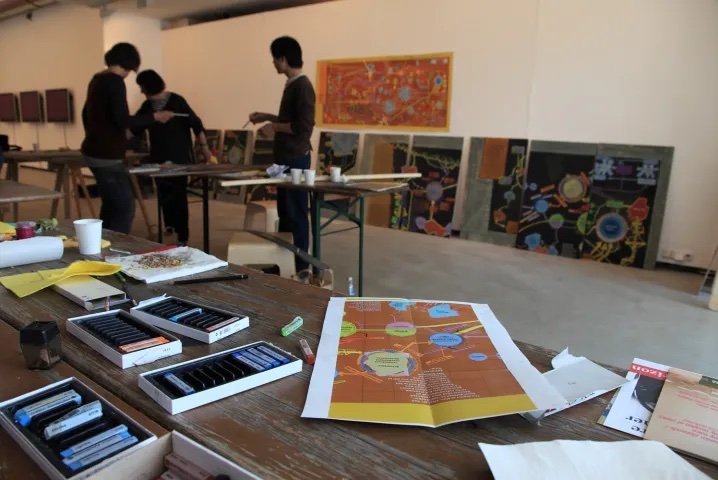
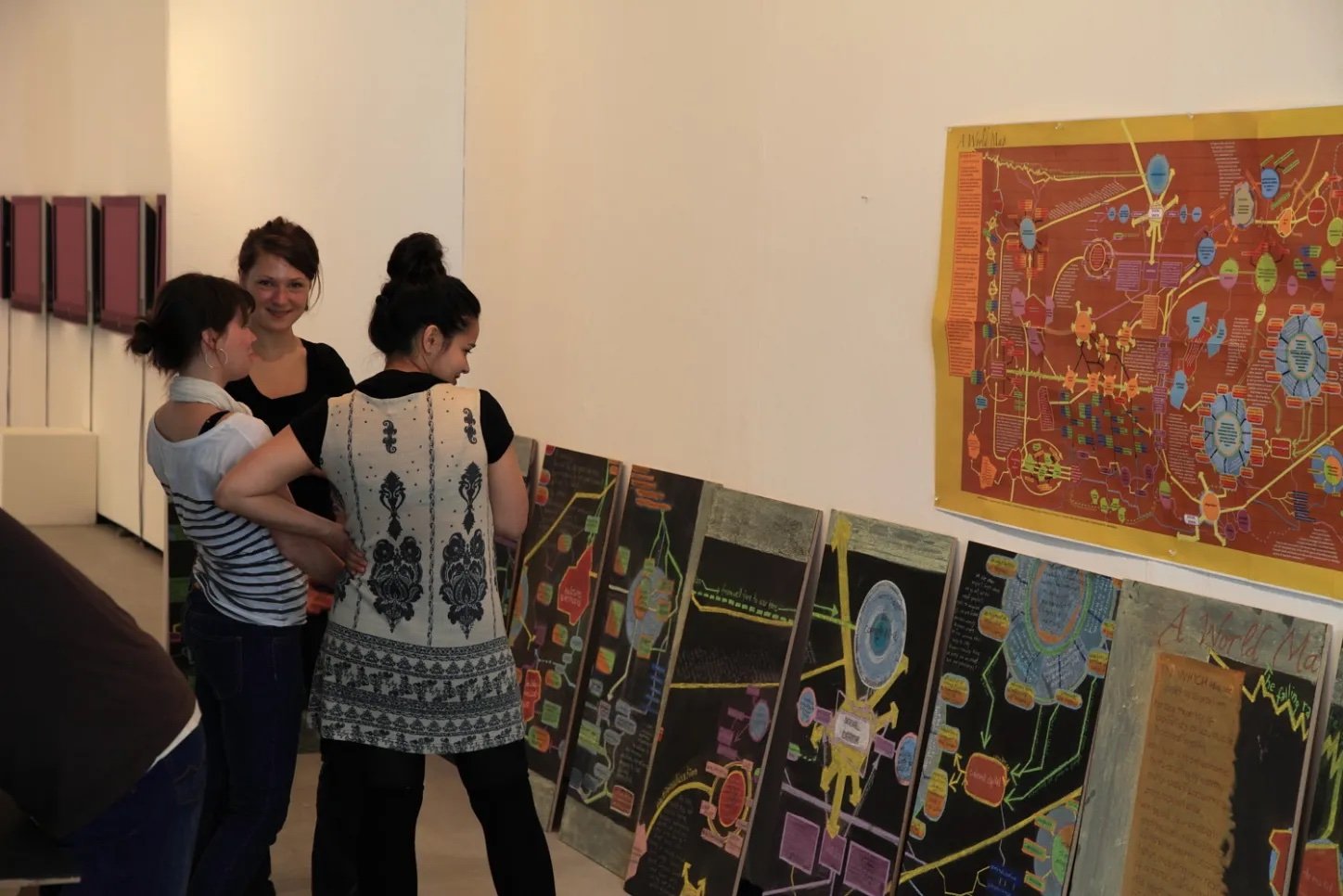
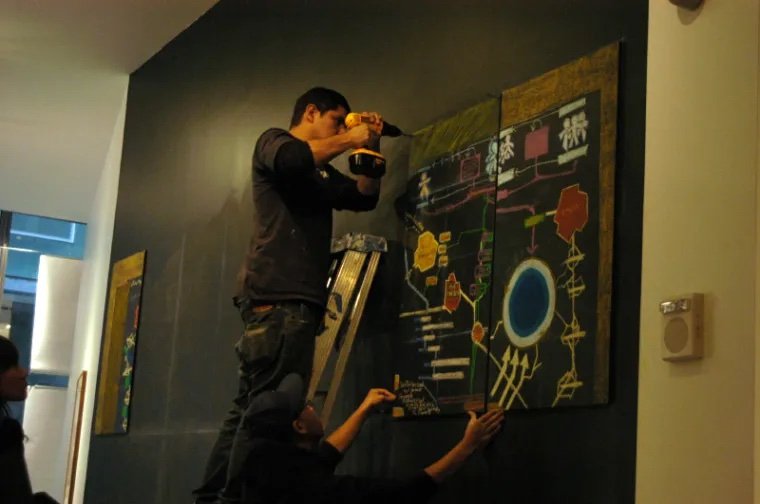
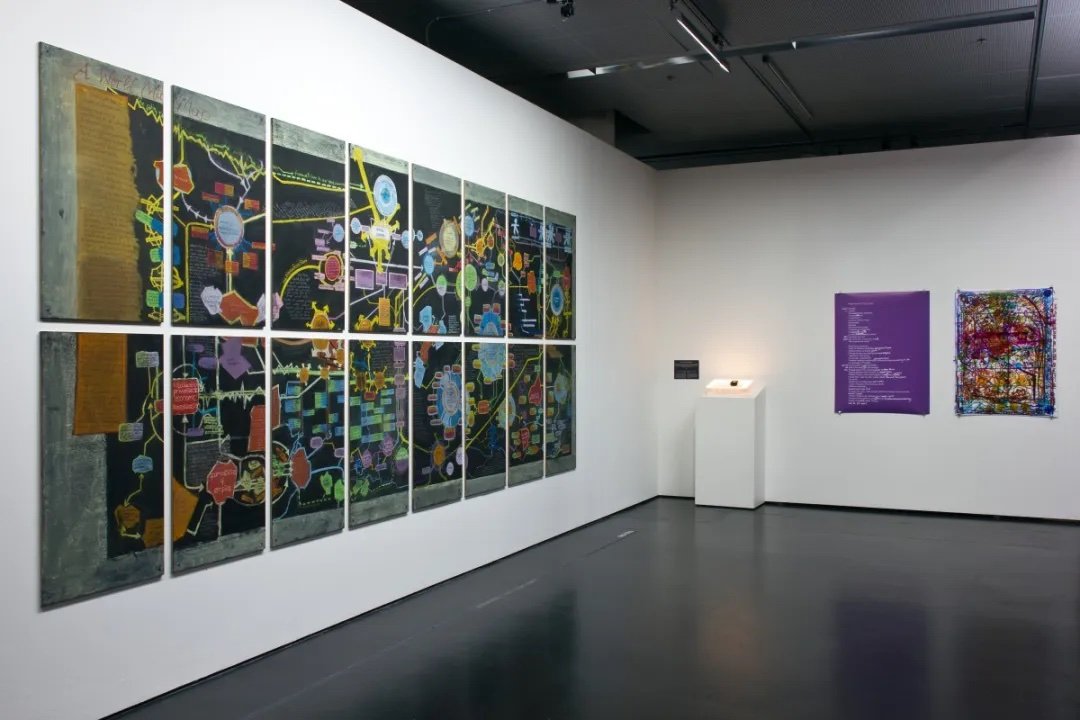
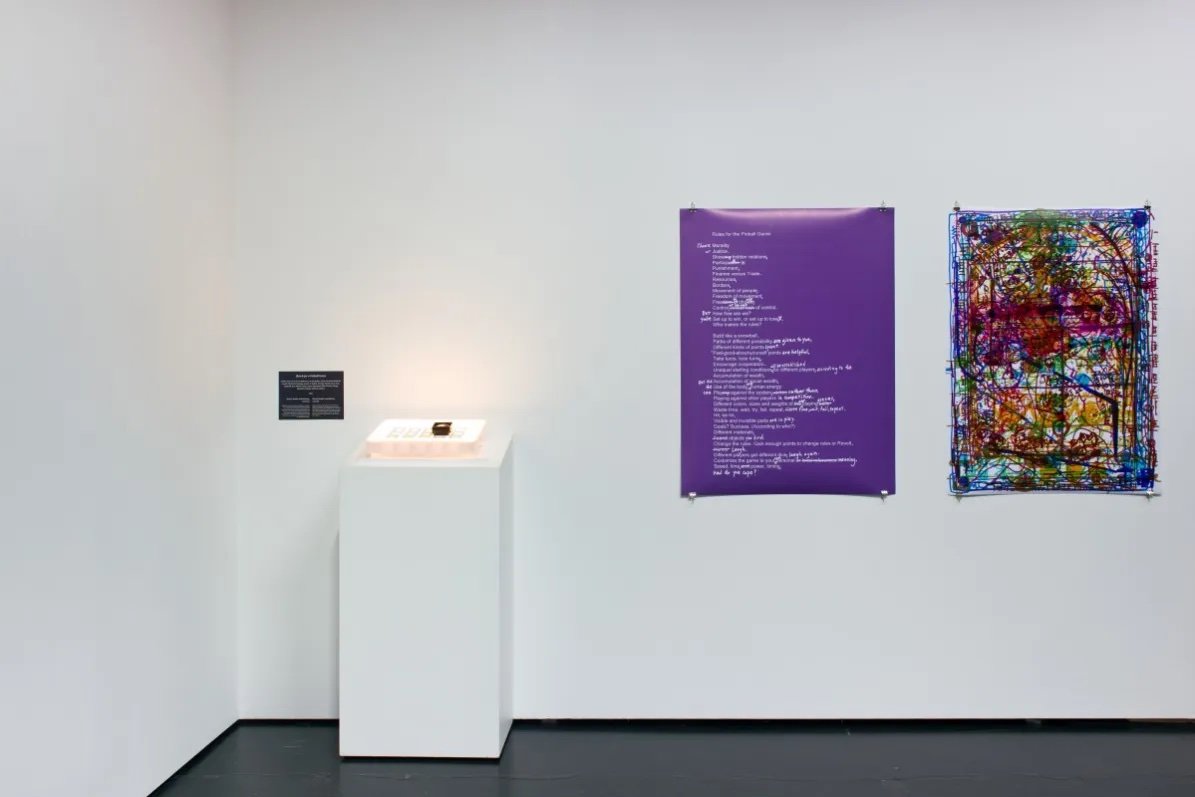
Click images for more information:


